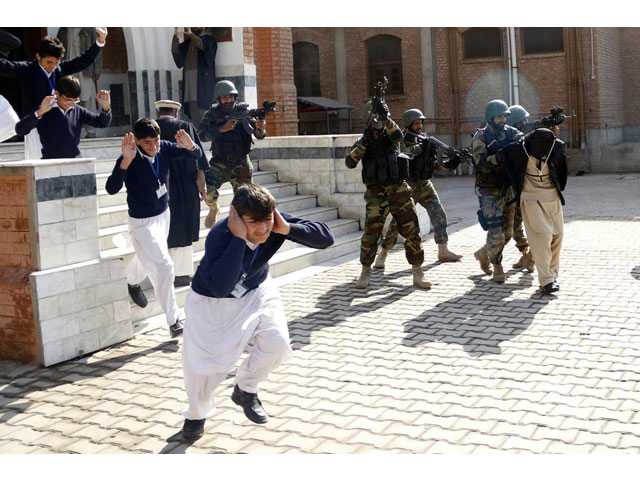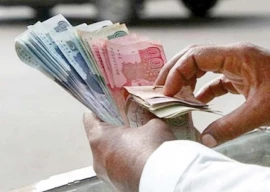
Militant groups have destroyed schools, attacked teachers and thus pressurised parents into keeping their children out of school. Such incidents have not just harmed students and their families, but are also causing devastating effects on Pakistani society, a Human Rights Watch report said on Monday.
The militants use attacks on schools and universities to sow intolerance and isolation, target government installments and affect the education of girls.
K-P govt claims major improvement in schools, IMU disagrees
The report Dreams Turned into Nightmares is based on interviews of 48 people including pupils, parents and schools administrations in Punjab, Sindh and Khyber-Pakhtunkhwa and aims to document attacks that took place between 2007 and late 2016.
Attacks on schools, students, teachers
Some 867 attacks on the country's schools took place between 2007 and 2015, causing 392 deaths and 724 injuries, according to Global Terrorism Database.
According to Global Coalition to Protect Education, at least 838 schools were targeted from 2009 to 2012, resulting in the deaths of 30 students and injuries to 97 others.
The data indicated that militant attack since 2012 claimed hundreds of lives.
Horrifying tales
Recalling an attack on Bacha Khan University in Charsadda on January 20, 2016, a 23-year-old student told HRW, "I was in my room in the hostel when I heard the sound of heavy firing. At this time, there were six other students with me in my room. We did not try to escape and tried to lock ourselves in the room."
"We continued to hear firing and footsteps. The militants knocked at our door, asking us to open it. I hid under the bed in my room. They eventually broke the door and came in. They killed five of my friends in front of me. Then they left the room."
"After a few minutes the militants came in again to check if anyone was alive. They did not look under the bed, but they lobbed a grenade in the room and left. I was very seriously injured by the shrapnel. I was in the hospital for 20 days and then I left for home. I have not been back at the university. I suffer from nightmares and panic attacks."
Attacks on women, girls
The violence and insecurity has compounded other barriers for female students. The Tehreek-e-Taliban Pakistan (TTP), after taking over in Swat in 2009, began a violent campaign against education for girls, forcing 900 schools to close. This situation forced more than 120,000 students and 8,000 female teachers to stop attending school.
Inadequate security
The state has adopted enhanced security measures following the attack on Army Public School in 2014, such as training teachers in use of arms, holding mock drills and raising boundary walls.
For Punjab police training, a state-of-the-art facility
Reportedly, 5,000 public schools in K-P, 2,600 public schools in Punjab, 3,600 public schools in Balochistan, and 49,000 public schools in Sindh were functioning without boundary walls.
Future measures
The federal and provincial governments need to adopt a systematic approach towards the protection of education. This should include prioritising education for girls, their schools and teachers.
Moreover, endorsing the Safe Schools Declaration, a non-binding political agreement opened for state support at an international conference in Oslo, Norway in May 2015, can help restore access to education when schools are attacked. This makes it less likely that students, teachers, and schools will be attacked in the first place.




1736599343-0/fizza-(8)1736599343-0-165x106.webp)






1736508423-0/Express-Tribune---News-Desk-(9)1736508423-0-270x192.webp)

1736495887-0/sidra--(63)1736495887-0-270x192.webp)









COMMENTS
Comments are moderated and generally will be posted if they are on-topic and not abusive.
For more information, please see our Comments FAQ